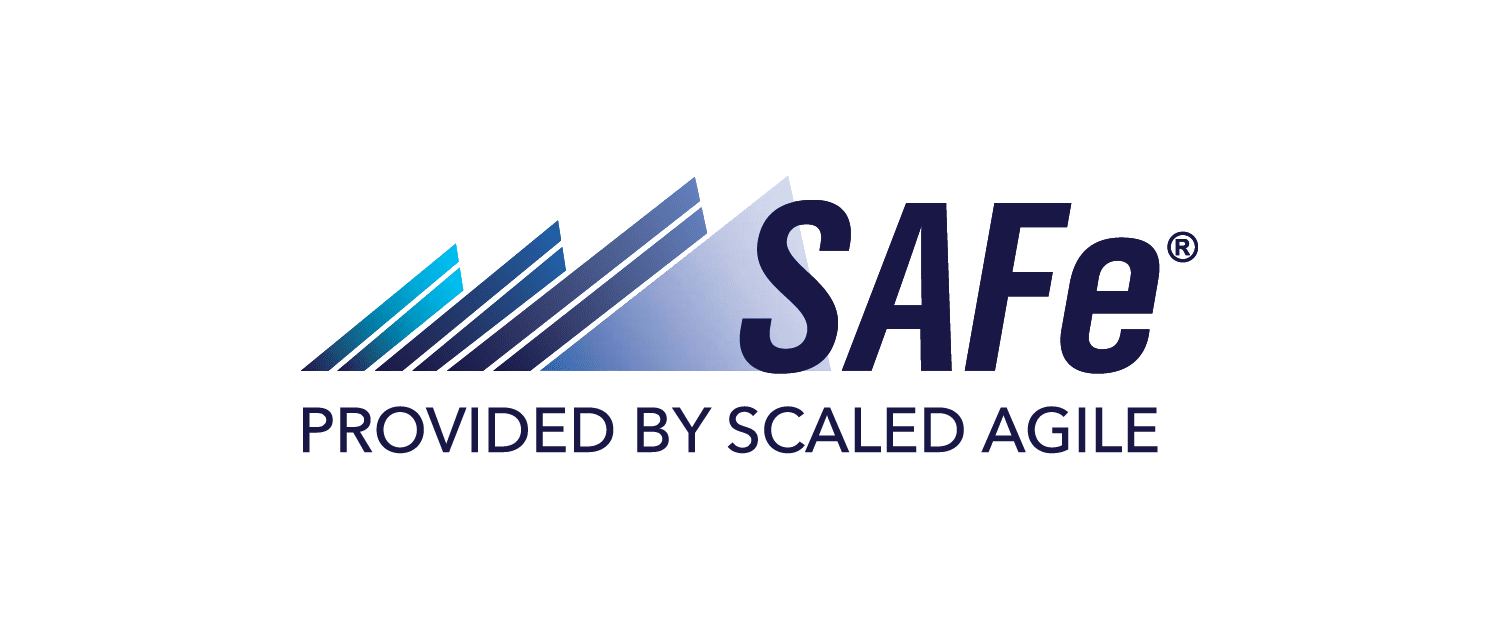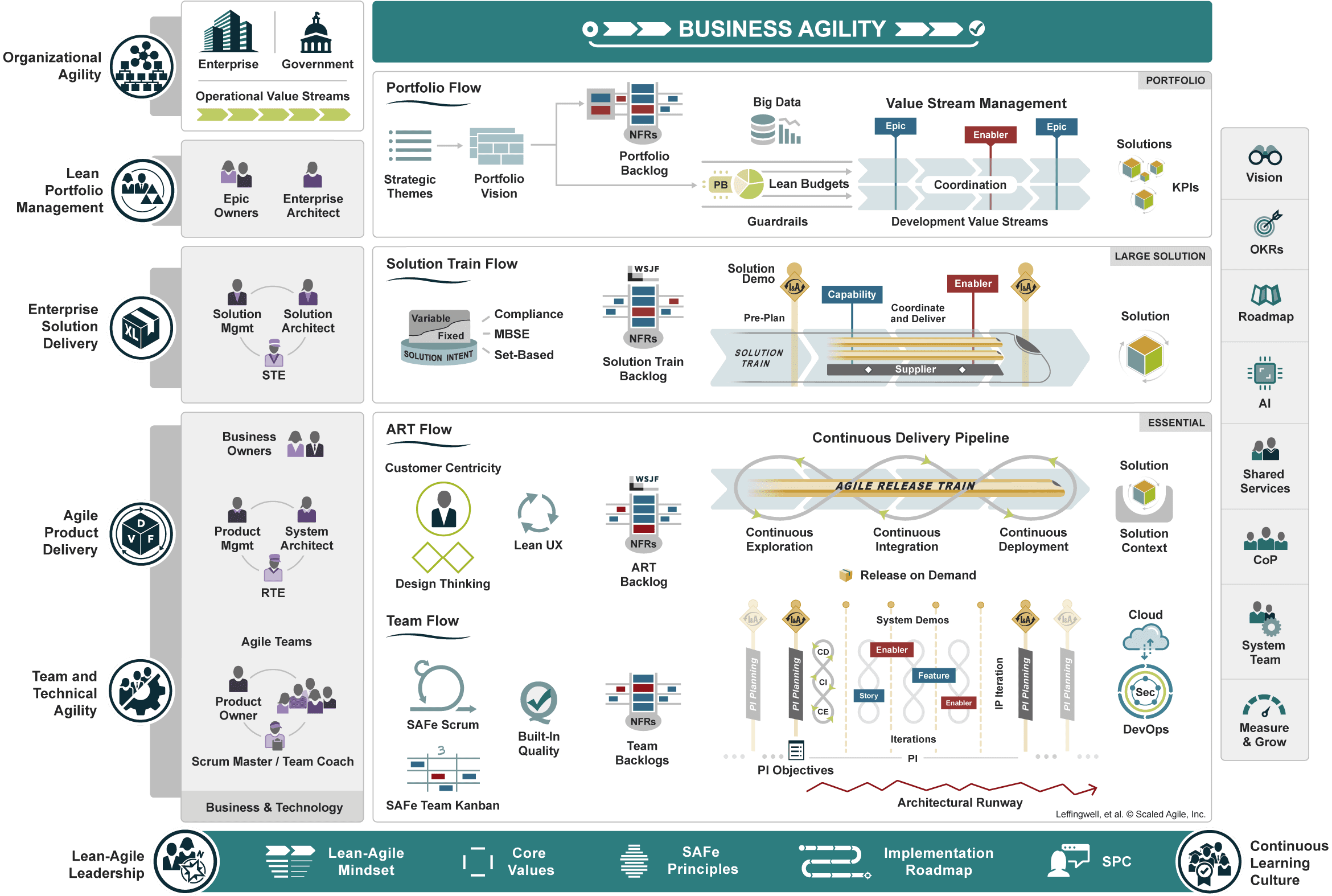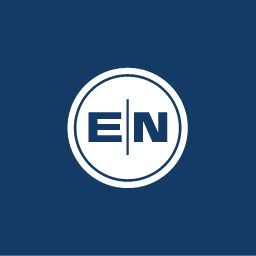SAFe Scaled Agile Framework Explained - Why You Should Consider It for Your Organization?
SAFe scaled agile can transform your organization's productivity and efficiency. Find out how with this comprehensive guide to its benefits and implementation.

Welcome to the world of SAFe - a proven and widely adopted framework for scaling agile practices in large organizations! As businesses strive to achieve faster delivery of high-quality products, many are turning towards adopting agile methodologies. However, as teams grow larger and more complex projects emerge, traditional agile frameworks may not suffice. This is where SAFe comes into play - helping organizations accomplish business agility across multiple teams while maintaining alignment with overall strategic objectives. In this blog post, we will delve into what SAFe entails and why your organization should consider implementing it. Let's dive in!
Introduction to Scaled Agile Framework (SAFe)
The Scaled Agile Framework (SAFe) is a set of principles and practices for implementing agile software development at scale. SAFe is based on the experience of hundreds of organizations that have successfully adopted agile practices at scale.
SAFe enables organizations to deliver large, complex solutions using agile practices while maintaining the necessary level of coordination and control. SAFe is designed to work with both traditional and agile project management approaches.
SAFe consists of four core components: Core Principles, Team Practices, Program Practices, and Portfolio Practices. These components are described in detail below.
Core Principles: The eight core principles of SAFe provide guidance for successfully implementing agile at scale:
- Assume variability; preserve options
- Build incrementally with fast integrated learning cycles
- Base milestones on objectives and experiments
- Visualize and limit WIP, reduce batch sizes, and manage queue lengths
- Focus on quality; test progressively
- Implement continuous delivery pipeline uninterrupted flow
- Inspect and adapt frequently at all levels
- Plan program portfolio value stream collaboratively end-to-end from institution change perspective using Objective Decision Processes
Benefits of Implementing SAFe Framework
When it comes to enterprise agility, the Scaled Agile Framework (SAFe) is hard to beat. Developed by Dean Leffingwell, SAFe is an internationally recognized framework that provides a comprehensive approach for scaling agile across the enterprise. Here are just some of the benefits your organization can enjoy by implementing SAFe:
-
Improved coordination and communication between teams: One of the biggest challenges with traditional waterfall approaches is getting different teams to work together effectively. With SAFe, teams are structured in a way that encourages communication and collaboration, which leads to better coordination between teams and improved overall productivity.
-
Increased flexibility: SAFe gives organizations the flexibility to tailor their processes to meet their specific needs. This means that you can implement SAFe in a way that works best for your organization, ensuring maximum efficiency and effectiveness.
-
Improved quality: The focus on continuous delivery and constant feedback built into SAFe helps ensure that errors are caught early and quality remains high throughout the development process.
-
Reduced risk: By breaking projects down into smaller pieces and delivering them incrementally, SAFe helps reduce the overall risk of failure for large-scale initiatives.
-
Increased transparency: One of the hallmarks of SAFe is increased transparency at all levels of the organization. This visibility into project status and progress helps everyone stay aligned and accountable, leading to better decision-making and faster delivery times.

There is a set of organizational and workflow patterns called the Scaled Agile Framework (SAFe) for implementing agile principles at an enterprise scale. SAFe is designed to help businesses scale lean and agile methods. It is a body of knowledge that provides systematic instructions on how to carry out tasks and responsibilities, organize and manage the job, and uphold principles. One of the many frameworks that aim to solve the issues that arise when extending beyond a single team is SAFe.
The SAFe Studio platform and the committed Customer Success Team at Scaled Agile support SAFe. A wide network of 500+ Scaled Agile Partners offers strategic advisory services, implementation assistance, training, coaching, and technology platforms for SAFe to guarantee the success of teams and the organization. In addition, the SAFe website updates the framework as it continually changes.
What is the SAFe framework?
The SAFe framework is a set of guidelines and best practices for implementing scaled agile within an enterprise. It was created by Dean Leffingwell and Craig Smith, two of the co-founders of the Scaled Agile Framework.
SAFe is intended to help organizations overcome the challenges of traditional, waterfall-style development approaches, which can be slow and cumbersome. SAFe helps create an environment that is more conducive to agility, allowing organizations to respond quickly to changes in their marketplace.
One of the key components of SAFe is the use of scrum teams. These teams are self-organized and cross-functional, with each team responsible for delivering a working product increment (WPI) at the end of every sprint. The WPI is then integrated into the larger system being developed.
Another key component of SAFe is the concept of value streams. A value stream represents the end-to-end flow of work needed to deliver a particular capability or features to customers. Each value stream has its own roadmap, which outlines when various features will be delivered.
The overall aim of the SAFe framework is to help organizations scale agile effectively by making sure that teams and value streams are properly aligned and working together toward a common goal.

How does it help your organization and teams?
Organizations that implement SAFe find that it help them in a number of ways, most notably by improving their overall quality and efficiency while reducing cost. In addition, SAFe strengthens communication and collaboration between teams, helps to identify and solve problems quickly, and provides a clear path for introducing new products or services. Overall, SAFe helps organizations to better align their strategies with customer demands, which leads to increased profitability.
In addition, SAFe can help improve an organization's overall agility, increase its speed to market, and improve quality. Implementing SAFe can also help reduce risk and increase predictability in an organizations projects.
The different levels of SAFe framework
The SAFe framework is a set of guidelines for implementing agile practices at scale. There are four levels of SAFe: portfolio, program, team, and individual.
- Portfolio level: The portfolio level is responsible for governing and authorizing projects. This level also defines the strategy and cadence for value delivery.
- Program level: The program level coordinates multiple teams to deliver a integrated solution. This level also incorporates feedback loops to ensure quality and continuous improvement.
- Team level: The actual work gets done at this level, they are are self-organizing and self-managing. They are responsible for delivering value increments that meet customer needs.
- Individual level: The individual level is focused on the personal development of each team member. This includes skills development, mentorship, and career growth opportunities.
Challenges faced in Implementing and Adopting the Framework
SAFe implementation and adoption present several problems. Including the correct people is a major task. This requires the correct combination of talents and knowledge and commitment from everyone.
Communication is another issue. As SAFe is dispersed, everyone must communicate progress and updates. This is difficult if team members are in various countries.
Finally, change management is difficult. SAFe has many advantages, but it requires change. Organizations may struggle with this if they're unsure how SAFe will affect their industry or area.
What are the best practices for implementing the framework?
The following are some tips and best practices to help you implement the SAFe Framework successfully in your organization:
-
Get senior management buy-in and support.
-
Create a interdisciplinary team to champion and drive the transformation.
-
Train and educate all stakeholders on what SAFe is and how it works.
-
Define and communicate the benefits of SAFe implementation in your organization.
-
Develop a comprehensive implementation plan with milestones, deliverables, and timelines.
-
Pilot the framework in one or two teams before rolling it out company-wide.
-
Monitor, evaluate, and fine-tune the implementation continuously.
Conclusion
Organizations may find the SAFe Scaled Agile Framework to be a valuable tool for planning daily operations.
Teams can work together more productively and maintain the timeliness of their tasks.
It is understandable why so many firms are using this framework to support their success in today's cutthroat industry thanks to its emphasis on agility, collaboration, and continuous improvement.
The SAFe Scaled Agile Framework should unquestionably be taken into account as a feasible choice for anyone seeking an agile approach for their business objectives.
Let's talk, we can help you with your SAFe scaled agile business needs.





